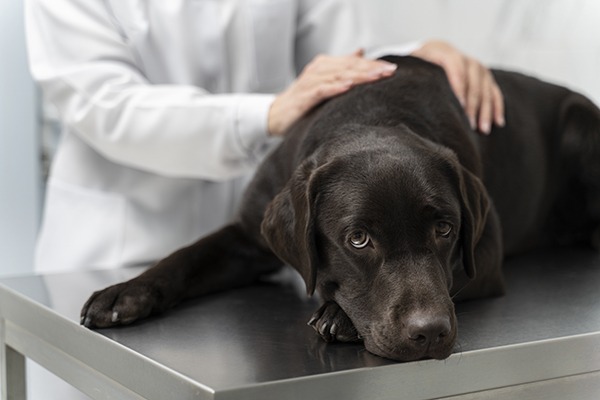Menu
Menu
Kidney disease refers to the inability of the kidneys to work properly. Kidneys perform several key functions in the body, the most important of which is filtering waste products from the blood. Kidneys also maintain the balance of electrolyte levels in the body (such as sodium, potassium, and chloride), maintain blood pressure, and produce urine. Damage to the kidneys can result in the buildup of waste products to dangerous levels in the blood, also known as azotemia.
There are two main types of kidney disease: acute kidney injury (AKI) and chronic kidney disease (CKD). Acute kidney injury was formerly called acute renal failure (ARF) and refers to sudden damage to the kidneys causing dysfunction. AKI often lasts only for a short period of time and can even disappear completely once the underlying cause is treated. However, pets that have been diagnosed with AKI are at risk of developing permanent damage to their kidneys, which can lead to CKD.
Chronic kidney disease, on the other hand, is a long-term condition that has no cure but can be managed with proper treatment. CKD occurs when the kidneys gradually lose function over time, leading to a buildup of waste products in the blood. Pets diagnosed with CKD can have a good and prolonged quality of life if caught early and managed correctly.

Acute kidney injury is characterized by the sudden onset of illness, usually caused by accidental ingestion of a toxin or an underlying health condition. CKD, on the other hand, is a gradual decline in kidney function that occurs over months or years. While AKI can be reversible, CKD is a long-term condition that has no cure.
As acute kidney injury is characterized by the sudden onset of illness in an otherwise healthy animal, it is usually caused by the accidental ingestion of a toxin or by an underlying health condition. Lilies are known to cause AKI in cats while grapes and raisins can do the same in dogs. Other poisons, such as antifreeze, or certain medications, such as nonsteroidal anti-inflammatory drugs (NSAIDs) can damage the kidneys. A bacterial infection in the kidney, also called pyelonephritis, can also cause AKI in both dogs and cats. Obstruction of the urethra, severe changes in blood pressure, and infections (such as leptospirosis in dogs) can also result in AKI.

Acute kidney injury develops suddenly, most often in a pet that appeared previously healthy. Clinical signs of acute kidney injury include:
In order to diagnose kidney disease, your veterinarian will review your pet’s medical history, perform a physical examination, check the results of bloodwork and urine tests, and may even order an abdominal x-ray and ultrasound. A biopsy of the kidney may be necessary to confirm the diagnosis in some pets.
The diagnosis process may include the following steps:
In order to determine proper treatment, your veterinarian will need to establish whether the kidney disease is acute or chronic, as well as the underlying cause if one can be found.
In pets with AKI, underlying causes such as a kidney infection or urethral blockage will be treated to prevent further damage to the kidneys. In addition to this, or if no underlying cause can be found, treatment is focused on alleviating the clinical signs associated with AKI. Fluid therapy, appetite stimulants, kidney-friendly diets, feeding tubes, anti-nausea medication, pain medication, and blood pressure treatment may be administered to prevent dehydration and maintain the proper balance of fluids and electrolytes in the body.
In severe cases of AKI where the pet is producing inadequate or no urine, dialysis can be used to filter the blood of waste products and give the kidneys time to heal. Hemodialysis purifies the blood of any waste products normally filtered out by the kidneys. Dialysis is used to stabilize severely sick patients while the kidneys recover and is usually only used if there are extremely high levels of toxins in the blood, a severe imbalance of electrolytes, and if the patient is overhydrated and unable to produce urine. Dialysis can prolong life and will require a discussion with your veterinarian if it is a feasible treatment option for your pet.
For chronic kidney disease, treatment aims to slow the progression of the disease and minimize clinical signs. This may include a kidney-friendly diet, medication to control blood pressure, and medications to treat anemia. In some cases, fluid therapy or even dialysis may be necessary.
It is possible to prevent certain cases of acute kidney injury in pets by keeping them away from potential toxins such as lilies, grapes, raisins, antifreeze, and certain medications. For chronic kidney disease, the best method of prevention is early detection. Regular wellness exams and bloodwork can help detect the disease in its early stages, allowing for proper management and treatment to ensure a good and prolonged quality of life for your pet.
